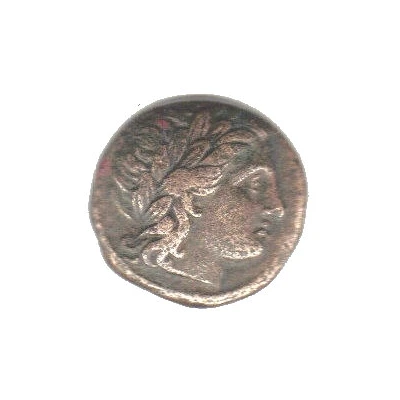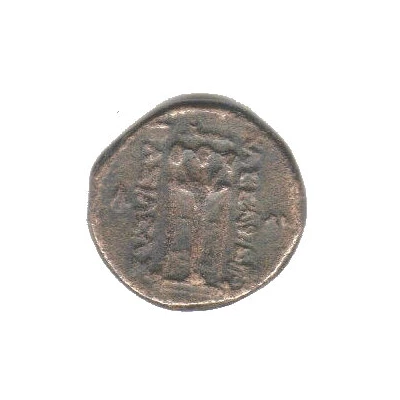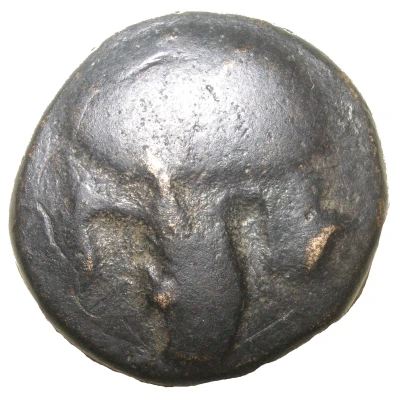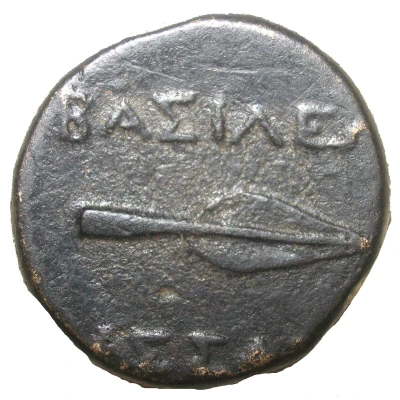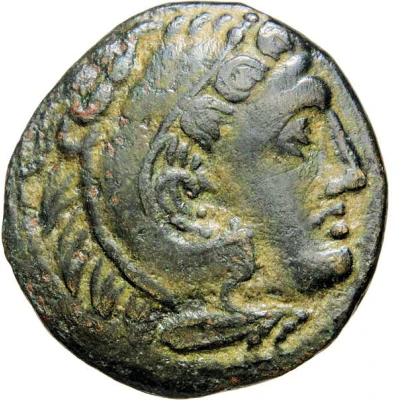
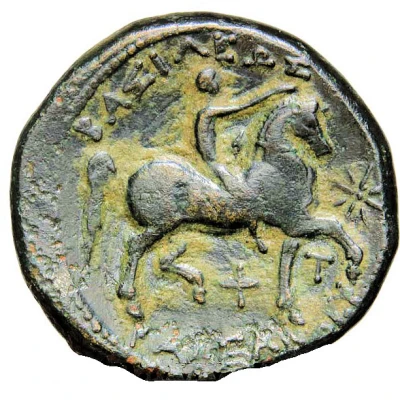

© CGB
Hemiobol - Kassandros 305 BC - 297 BC
| Bronze | 6.16 g | 19 mm |
| Issuer | Kingdom of Macedonia |
|---|---|
| Regent | Cassander (317 BC - 305 BC) |
| Type | Standard circulation coin |
| Years | 305 BC - 297 BC |
| Value | Hemiobol (1⁄12) |
| Currency | Drachm |
| Composition | Bronze |
| Weight | 6.16 g |
| Diameter | 19 mm |
| Shape | Round (irregular) |
| Technique | Hammered |
| Demonetized | Yes |
| Updated | 2024-10-10 |
| Numista | N#108712 |
|---|---|
| Rarity index | 82% |
Reverse
Young boy, on horse marching right, crowning the horse with his right hand.
Lettering above and below horse; sometimes, a monogram between horses legs or in field.
Script: Greek
Lettering: ΒΑΣΙΛΕΩΣ ΚΑΣΣΑΝΔΡΟΥ
Translation: (Coin) of King Kassandros
Edge
Gross
Comment
Some catalogs give obverse portrait as picturing king Alexander as Heracles; some also place reverse as being king Alexander on his horse Bucephalus.Strike is placed after -305 thanks to the lettering mentioning the title king, Cassander becoming king in -305.
A similar coin is known with inverted reverse lettering ΚΑΣΣΑΝΔΡΟΥ ΒΑΣΙΛΕΩΣ instead of ΒΑΣΙΛΕΩΣ ΚΑΣΣΑΝΔΡΟΥ.
This coin appears to have been struck by mints of Amphipolis or Pella.
Interesting fact
The Hemiobol coin featuring Kassandros (305 BC - 297 BC) from the Kingdom of Macedonia was used as a form of currency during a time of great economic and political change in the region. The coin's design, which includes an image of Kassandros on one side and a depiction of Zeus on the other, reflects the cultural and religious influences of the time. Despite being made of bronze, a relatively common metal, the coin's weight of 6.16 grams suggests that it was still a valuable and significant form of currency in its day.
